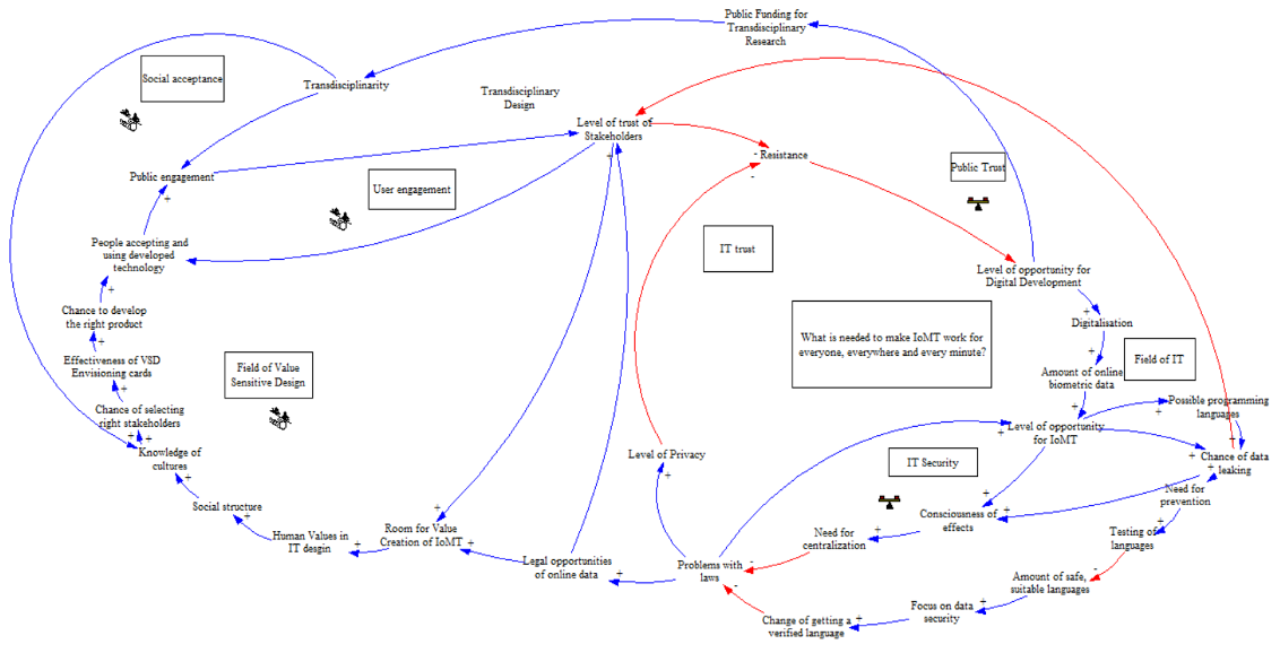Hi there! My name is Wouter Scholten. I am a third-year student of Information Technology Service Management at Saxion UAS. I am delighted that I can share the results of my mini-research project on the opportunities of the Internet of Medical Things (IoMT). I did this mini-project during the Honors Program Creativity in Finance and Management.
The research
Motivation to start this journey
From the day I knew the opportunities of Internet of Things (IoT), I became interested in the, nowadays, booming technology. Several questions came into my mind; “What are the benefits for me?” “How can it make my life easier?”, etc. This project is carried out at the same time I followed the minor Digital Business Models and Blockchain, where we had to set up an IoT product with a website, Business Canvas Model and tokenization. Here I became even more involved with IoT.
I had the luck that we were able to come up with our own topic. Of course I wanted to do something with Internet of Tings. IoT is unfortunately already very developed and too big for a research as mine. I myself have often thought about what it would like if you could see your own body values. Therefore, I chose for Internet of Medical Things. IoMT is, among other things, making devices that can read information from your body, smart. For those who are not familiar with IoT, an example is that you can see your moisture content via an app.
I conducted qualitative research with three professionals to turn their expertise and experience into data that was valuable for my project. I used System Thinking (Goodman, 2018) and Causal Loop Diagramming (Wikipedia, 2020) to get an idea of how their different perspectives could be integrated in one joint model.
Methodological approach
I wanted to divide my project into three perspectives: Research and Design (R&D) in the medical sector, IT security and Value Sensitive Design (VSD). I divided it in these three perspectives because in so many projects, something was developed and released, but never used by any customer. I wanted to discover how it is possible to develop an IT service that will be used by everyone, as mentioned in my question.
The methodological approach I used to answer my research question, is having conversations with three people. These three people all had a different perspective on the question about IoMT, but all three had an outstanding knowledge and passion for the subject. As the interviews were all online, it was easier to start a conversation with them. The data I got out of the interview, I wrote down and defined important variables about making IoMT work for everyone, everywhere and every minute.
The headlines are: The Level of trust of stakeholders and the resistance removal, the need for IT to be trusted for the sake of privacy and the power of Value Sensitive Design.

Recommendations
We are in the fourth industrial revolution, where the Internet of Things is, and will, become a hugely influential force (Schwab, 2015). That’s why we must get this workable. How do we ensure that everyone accepts it and that it is safe before we start using it? This has become clearer to me by carrying out this mini-project. I will continue to follow this topic and hope to have a part in its development one day.
A proposal I want to make is that in the future of IoMT, privacy and data storage should be prioritized. Privacy has become more critical than ever, and if we cannot guarantee data safety, people will never use this powerful technology. This would be a shame because there it really can improve human health. We just need to gain trust by showing where the data is stored and that it is safe.
With that said, it is time to come to an end. I would like to say a big thank you to everyone who helped me carry out this short but eye-opening project.
Want to read more about this subject?
Click the button on the right.